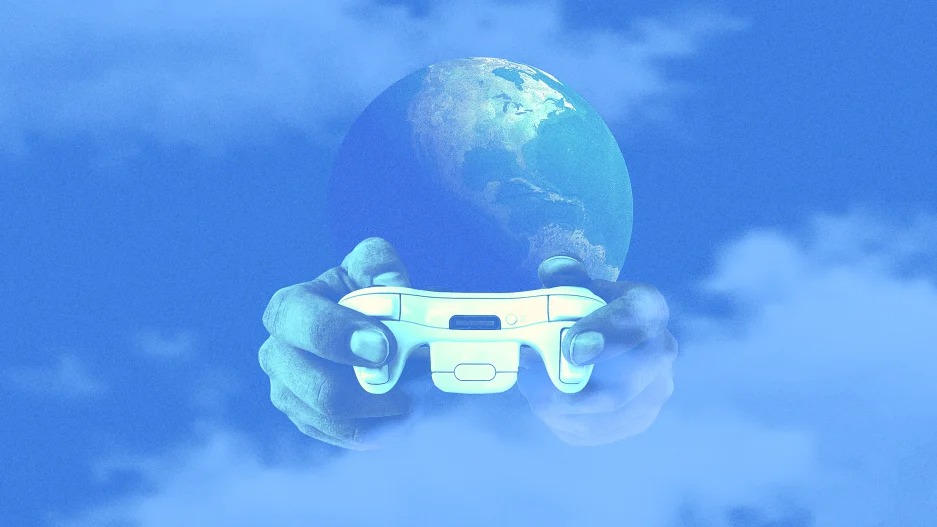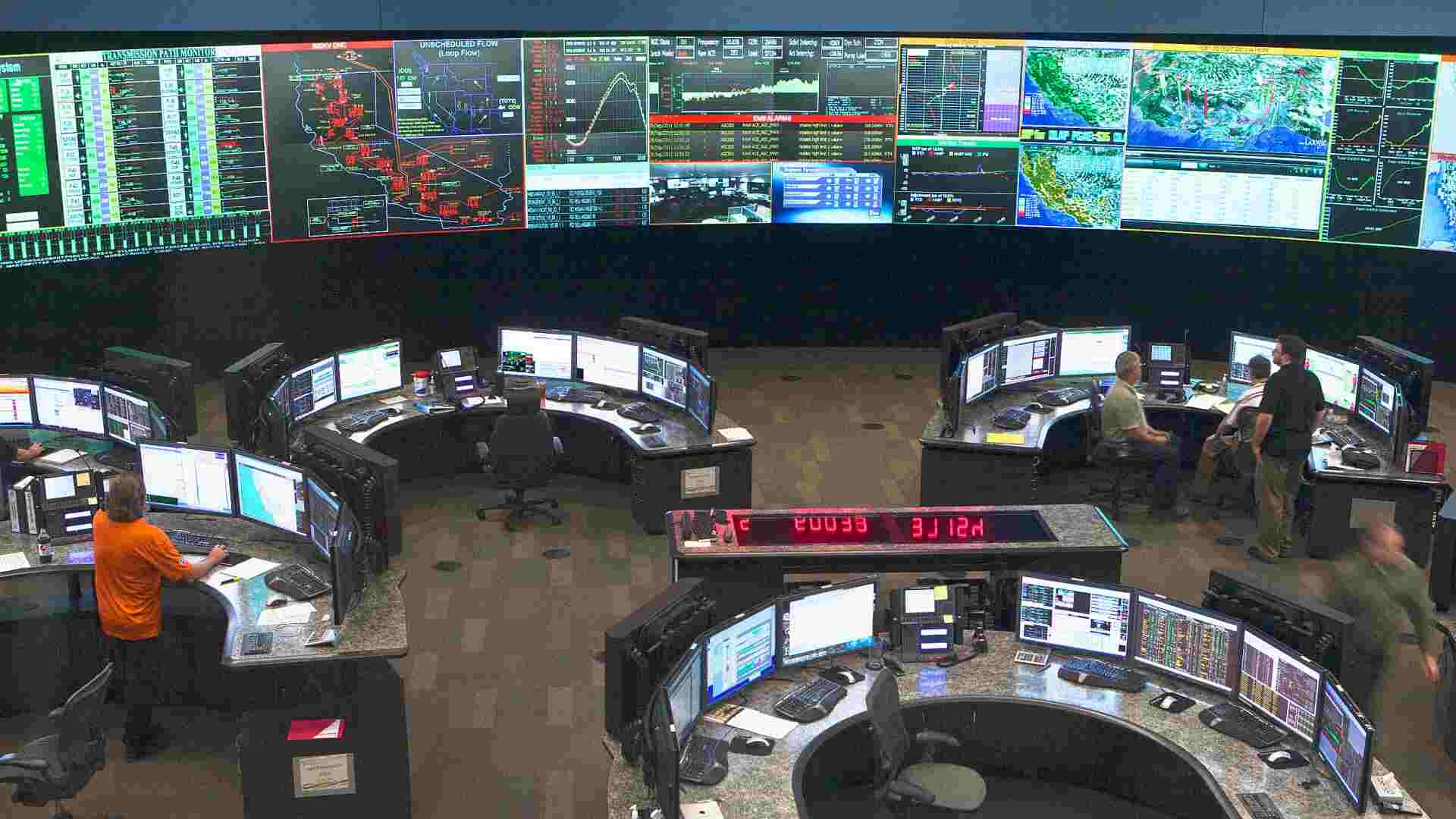- | 10:27 am
Can teaching gamers about climate change motivate them to take action?
There are 3 billion people who regularly play games on their phones, computers, or consoles. Can they be reached with a pro-climate message?

It’s wired into our DNA to play. Spending time playing has been shown to enhance our cognitive, social, and physical skills. But combine that desire to play with the internet, technology, and hyperrealistic computer graphics—and you get the mind-blowing growth of the video games industry, which will bring in more than $200 billion in 2024.
In 2022, roughly 3 billion people regularly played some sort of game on their phone, computer, or gaming console. These levels of attention, engagement, and influence give video gaming companies an almost unmatched global customer base.
“The audience is already there waiting, right? They’re playing every single day, 3.5 hours a day,” says Rosemary Mann, director of gaming strategy for the Arsht-Rockefeller Foundation Resilience Center. “We can make an impact on climate change by teaching players new skills and new knowledge. It’s on us to try to figure out: How do we bring solutions to that audience that’s ready to take it in, and then how do we measure that?”
The Resilience Center is one of several organizations that is working with game developers around the world to fight the climate crisis and advocate for environmental protections. Mann and her team work with big-budget franchises including Fortnite, Call of Duty, and Minecraft to build in climate resiliency storylines and teach the players about disaster solutions.
“And then they experience an opportunity to make choices,” Mann says. “What choices could they make to have a better world? So as you’re going through the levels of the game, it will tell you to plant a tree, right? Plant a tree, plant a mangrove, preserve the shoreline, and so on.” The games are also designed to help build empathy with others facing climate upheavals. The team’s goal is to reach a billion people with climate-resilience solutions by 2030.
The U.N. has found some climate activism success with its annual Green Game Jam, which brings together gaming studios from around the world and challenges them to come up with in-game conservation campaigns and donations to climate change causes. The 2021 event generated 60,000 pledges signed and raised $800,000 in charity donations. Games revolving entirely around conservation are also gaining popularity. Alba: A Wildlife Adventure, which features a young girl trying to protect an island from property developers, donates a percentage of its download profits to habitat preservation and tree planting.
Environmental simulation game ECO inspired 35-year-old Juni Yeung to run for local office. After playing more than 1,000 hours of the game, Yeung wanted to put what she’d learned into action. “When you’re launched into the world of ECO, you are only one person with one first-person perspective looking outward. But after you get past the digging and the building and so forth, and you start interacting with people, that’s when your horizon—and the meta-game—starts to expand exponentially,” she says.
But the power of the industry poses plenty of ethical challenges too. American schoolchildren spend an average of 13 hours per week playing video games, according to researchers. Wouldn’t they be better off outside enjoying real-life nature rather than the simulated version? It’s not that straightforward, Mann says, noting “Kids should be outside, kids should not be on a computer, but they’re doing it anyway. Hands down, 3.5 billion people are [gaming] every single day.
“I also talk about the fact that it builds friendships and relationships and social cohesion,” she adds, “and that we are starting to build a really great library of research that shows that behaviors do change.”
Climate consultants like Ben Abraham, the author of Digital Games After Climate Change, argue that the video games industry needs to be more transparent about its own carbon footprint and the use of sometimes toxic, conflict minerals in gaming devices.
“If we can use games to inform players and shift public opinion to take action on climate, then yeah, sure,” Abraham says. “But how can anyone take you seriously if you are still a huge polluter? If you’re emitting tons and tons of CO2 and telling others not to . . . you’ve gotta clean up your own act first. I just think that those kinds of interventions don’t have any real legitimacy until the gaming industry has addressed that. It’s gotta get its own house in order.”
The U.N. estimates that gaming generates about 50 million metric tons of e-waste every year, only 20% of which gets recycled. Then there’s all the electricity needed for high-intensity graphics and streaming. Another study suggests that the U.S. gaming industry alone generates as much CO2 as about 5 million cars.
But change is possible. Unity, the world’s largest gaming engine, which powers Pokémon Go, Monument Valley, and Call of Duty: Mobile, has been carbon neutral since a company-wide overhaul back in 2020. Unity Technologies has also bought more than half a million dollars’ worth of carbon offsets.
“For games and the gaming industry, there are really two primary areas. The first is making sure that your own operations are decarbonized so that games are running on clean energy,” says Marina Psaros, Unity’s head of sustainability. “And then there’s the content side. So how do we build knowledge and awareness and information and a desire to act on the behalf of gamers? And then how can games actually support them to take meaningful action?”
Recently Unity has been working with Conservation International and Vision3 to create an immersive VR experience called Drop in the Ocean. The educational simulation shrinks viewers down to the size of a piece of plankton to experience marine wildlife and the plastic pollution problem from an entirely different viewpoint. Psaros hopes that in the future, high-quality VR could replace experiences like zoos.
“We know that climate change is already causing devastating losses to the places and the people and the species and the experiences that we love,” she says. “And I think for many around the world [it] can be very overwhelming and traumatizing to confront that loss. People just turn off and try to ignore the situation that we’re in. And I think that we can actually transform that fear and grief into knowledge and action.”






































